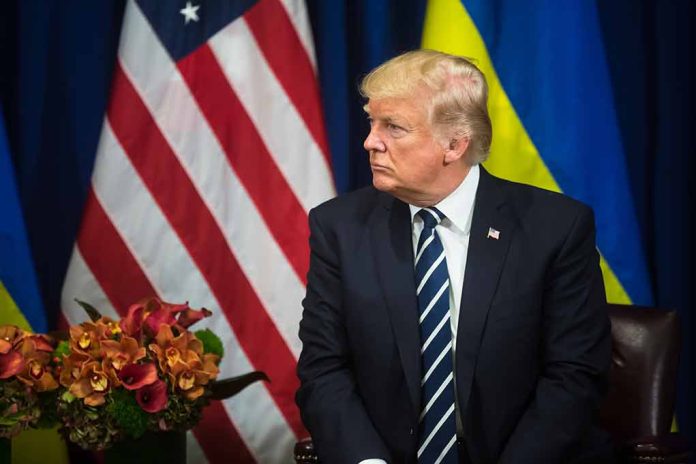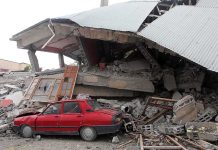
The Trump administration has lifted its suspension of military aid to Ukraine as Kyiv agrees to a 30-day ceasefire proposal, shifting the focus to Russia’s response to potential peace talks.
Key Takeaways
- The Trump administration has resumed military aid and intelligence sharing with Ukraine after temporarily suspending it.
- Ukraine has agreed to a 30-day ceasefire proposal, with the U.S. now presenting the offer to Russia.
- Secretary of State Marco Rubio emphasized that the decision for peace now lies with Moscow.
- European leaders, including those from Poland, France, and Britain, have welcomed the development and are working on security guarantees for Ukraine.
- Russia continues to hold battlefield momentum in eastern Ukraine while maintaining demands that Ukraine drop its NATO bid.
U.S. Restores Military Support as Ukraine Accepts Ceasefire Proposal
The Trump administration announced that it would immediately resume military aid and intelligence sharing with Ukraine, a significant policy shift that comes as part of broader diplomatic efforts to end the three-year war. The decision follows Ukraine’s agreement to a U.S.-proposed 30-day ceasefire, potentially opening a path to negotiations with Russia. National Security Advisor Mike Waltz indicated that Ukrainian officials who met with the administration showed alignment with President Trump’s vision for bringing the conflict to a close.
Secretary of State Marco Rubio made clear that the next steps depend on Russia’s willingness to engage with the proposal. “We’re going to tell them this is what’s on the table. Ukraine is ready to stop shooting and start talking. And now it’ll be up to them to say yes or no. If they say no, then we’ll unfortunately know what the impediment is to peace here,” said Rubio at a press conference announcing the decision.
“The intelligence block is lifted. Arms can now resume.”
President Trump has lifted the pause on arms shipments and US intelligence sharing with Ukraine, says @JPonpolitics.
🔴https://t.co/ElNHhIYcEN#TimesRadio pic.twitter.com/qYRkfNWZW5
— Times Radio (@TimesRadio) March 11, 2025
European Leaders Rally Behind Peace Efforts
The announcement has been met with approval from European leaders who have been working on parallel tracks to support Ukraine. Polish Prime Minister Donald Tusk and various EU officials welcomed the progress, while French President Emmanuel Macron has called for concrete security guarantees for Ukraine in the event of a ceasefire. Macron and British Prime Minister Keir Starmer are spearheading efforts to form a coalition that could enforce a potential ceasefire agreement, with representatives from 34 countries recently meeting in Paris to discuss these measures.
British Prime Minister Starmer described the U.S.-Ukraine agreement as a “significant breakthrough” and urged Russia to agree to the ceasefire terms. The Paris meeting focused on establishing credible security guarantees linked to NATO capabilities, addressing one of Ukraine’s primary concerns about any potential pause in hostilities.
Battlefield Realities and Russian Demands
Despite diplomatic progress, the situation on the ground remains challenging for Ukrainian forces. Russia continues to hold battlefield momentum, particularly in the eastern Donetsk region. Moscow has not offered concessions and maintains its demands that Ukraine abandon its NATO aspirations and recognize Russian control over occupied territories. These maximalist positions have complicated previous peace efforts and may present obstacles to the current initiative.
Public sentiment in Ukraine remains cautious about the ceasefire proposal, with many citizens expressing concern that a temporary halt in fighting might simply allow Russian forces to regroup. Ukraine has been expanding its domestic arms industry, particularly in developing high-tech drones, which have been used in recent large-scale attacks on Russian territory. Just days before the ceasefire announcement, Ukraine launched a massive drone assault targeting several Russian regions, including Moscow, which was followed by Russian counterattacks with drones and a ballistic missile.
Path Forward for U.S.-Led Peace Initiative
President Trump has indicated he might speak directly with Russian President Vladimir Putin and has welcomed Ukrainian President Zelensky back to the White House, signaling continued high-level engagement on the issue. The administration’s decision to resume military aid while simultaneously pushing for peace talks represents a dual-track approach that aims to strengthen Ukraine’s position at the negotiating table.
Ukrainian officials have consistently emphasized the importance of achieving a “just and lasting peace” with robust security guarantees. Presidential aide Andriy Yermak reiterated this position during recent international discussions, underscoring that any settlement must protect Ukraine’s sovereignty and territorial integrity. With the resumption of U.S. military aid, Ukraine may have greater leverage in potential negotiations, though Russian intransigence remains a significant hurdle to overcome.
Sources:
U.S. will immediately resume military aid as Ukraine says it is open to 30-day ceasefire
Ukraine backs 30-day ceasefire as US ends aid freeze













